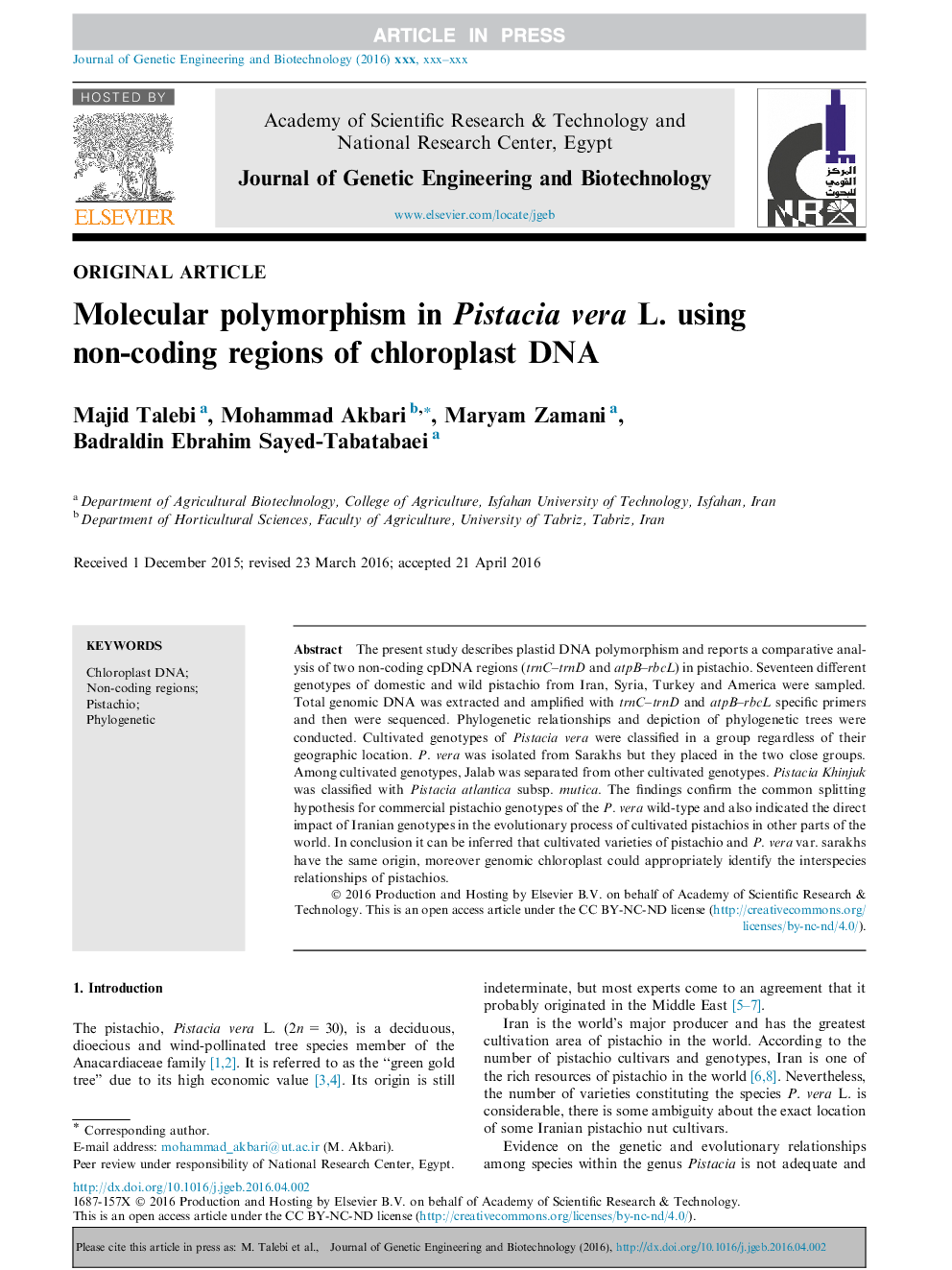| Article ID | Journal | Published Year | Pages | File Type |
|---|---|---|---|---|
| 8416541 | Journal of Genetic Engineering and Biotechnology | 2016 | 7 Pages |
Abstract
The present study describes plastid DNA polymorphism and reports a comparative analysis of two non-coding cpDNA regions (trnC-trnD and atpB-rbcL) in pistachio. Seventeen different genotypes of domestic and wild pistachio from Iran, Syria, Turkey and America were sampled. Total genomic DNA was extracted and amplified with trnC-trnD and atpB-rbcL specific primers and then were sequenced. Phylogenetic relationships and depiction of phylogenetic trees were conducted. Cultivated genotypes of Pistacia vera were classified in a group regardless of their geographic location. P. vera was isolated from Sarakhs but they placed in the two close groups. Among cultivated genotypes, Jalab was separated from other cultivated genotypes. Pistacia Khinjuk was classified with Pistacia atlantica subsp. mutica. The findings confirm the common splitting hypothesis for commercial pistachio genotypes of the P. vera wild-type and also indicated the direct impact of Iranian genotypes in the evolutionary process of cultivated pistachios in other parts of the world. In conclusion it can be inferred that cultivated varieties of pistachio and P. vera var. sarakhs have the same origin, moreover genomic chloroplast could appropriately identify the interspecies relationships of pistachios.
Related Topics
Life Sciences
Biochemistry, Genetics and Molecular Biology
Biotechnology
Authors
Majid Talebi, Mohammad Akbari, Maryam Zamani, Badraldin Ebrahim Sayed-Tabatabaei,
